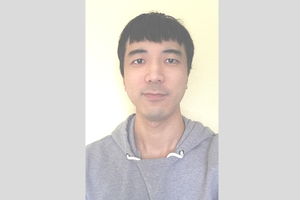
The balance between acetylcholine and dopamine in the dorsal striatum is critical for motor and learning functions. Dopamine cells residing in the substantia nigra pars compacta (SNc) and local cholinergic interneurons (ChIs) densely innervate the dorsal striatum and have strong reciprocal actions on the principle output neurons, medium spiny neurons (MSNs). The imbalance between striatal cholinergic and dopaminergic activities can lead to a variety of motor disorders including Parkinson’s disease (PD), Huntington’s disease, and Dystonia. Anatomical evidence suggests that ChIs and dopamine neurons interact with each other in many aspects. While dopamine neurons directly innervate ChIs, ChIs also make axon-axonal connections onto the dopaminergic input. However, questions remaine on how their interactions contribute to maintain the ballanc of acetylcholine-dopamine. In particular, synchronous firing of ChIs can trigger dopamine release by activating nicotinic acetylcholine receptors (nAChRs) on dopaminergic terminals. But it is unclear whether ChI-driven dopamine release and direct dopamine release by dopamine cell firing act differently on post-synaptic MSNs. On the other hand, dopamine neurons can inhibit ChIs via D2 dopamine receptor (D2R). However, details on how dopamine neurons modulate ChIs in different sub-regions of the dorsal striatum in the physiological conditions and pathological conditions remains to be elucidated. This thesis work aims to address the above questions. Firstly, I compared the activation of D2R on indirect pathway MSNs (iMSNs) evoked by two different forms of dopamine release: either direct midbrain dopamine release or ChI-drive release. I found that synchronous actions of ChIs drive dopamine transmission at D2R in iMSNs comparable to direct dopamine transmission by activating dopamine cell axons. However, these two distinct pathways of dopaminergic transmission are differentially controlled by opioid receptors. Secondly, I examined how dopamine neurons modulate ChIs in the dorsomedial striatum (DMS) and the dorsolateral striatum (DLS). I found that in the DMS, dopamine neurons inhibit cholinergic activity via D2R. Whereas in the DLS, dopamine neurons facilitate the firing of ChIs through co-release of glutamate acting on metabotropic glutamate receptor 1 (mGluR1). Lastly, I investigated how the modulation of dopamine neurons on ChIs in the DMS and DLS is altered in early stage PD. I found that due to a reduction of dopamine re-uptake in the dorsal striatum, the inhibitory effect of dopamine neurons on ChIs in the DMS is preserved even when dopaminergic axons are degenerated by 50%. However, the potentiation of cholinergic activity by glutamate co-release in the DLS is completely lost in early stage PD because of a reduction of mGluR1 level in ChIs. I further show that rescuing mGluR1 expression in dorsolateral ChIs alleviates motor deficits in PD mice. Taken together, my thesis work examines how ChIs and dopamine neurons influence each other in the dorsal striatum. The findings uncover previously unknown regional differences in acetylcholine-dopamine interactions and reveal novel targets for treatments of motor disorder.